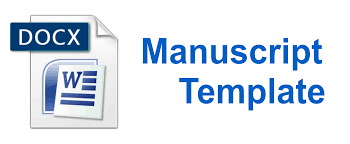PEMANFAATAN METODE RADIOCARBON DATING DALAM PENELITIAN TSUNAMI DAN PERUBAHAN IKLIM DI INDONESIA
DOI:
https://doi.org/10.55681/armada.v1i6.592Keywords:
Fosil, Metode Radiocarbon Dating, Perubahan Iklim, Sedimen, TsunamiAbstract
Penelitian ini membahas tentang pemanfaatan metode radiocarbon dating dalam penelitian tsunami dan perubahan iklim di Indonesia. Kondisi geologi Indonesia yang rentang akan bencana alam, membutuhkan penelitian yang akurat untuk mengurangi resiko bencana tersebut. Penelitian ini menggunakan pendekatan kualitatif dengan metode deskriptif untuk mendalami deskripsi dan interpretasi sifat-sifat sampel organik yang terkait dengan peristiwa tsunami. Hasil penelitian ini memberikan pemahaman yang lebih baik tentang potensi tsunami di Indonesia melalui pemahaman tentang faktor geologi seperti zona subduksi, palung laut dalam, pulau vulkanik, dan selat sempit. Selain itu, penelitian ini juga memberikan wawasan tentang perubahan iklim di masa lampau di Indonesia melalui analisis radiocarbon dating terhadap flora yang ditemukan dalam lapisan sedimentasi pasca-tsunami.
Downloads
References
Arikunto. (2014). Manajemen Penelitian. Bandung: Rineka Cipta.
BMKG. (2023, June 9). Gempa Bumu. Retrieved from https://www.bmkg.go.id/gempabumi/gempabumi-terkini.bmkg
BNBP. (n.d.). Badan Nasional Penanggulangan Bencana. Retrieved from https://bnpb.go.id/laporan-bencana-indonesia-2021
Chuan, L., Switzer, A. D., Zhao, Y., Bai, Y., Yulianto, E., Prartono, T., & Rauh, C. (2021). Recognizing ancient tsunamis in a carbonate system, El Nido, Philippines. Sedimentary Geology.
Gica, E., & Spillane, M. C. (2016). Tsunami hazard and risk assessment: An integrated approach. Coastal Engineering, 97-111.
Haris, A., Yulianto, E., & Rachmansyah, A. (2020). Tsunami vulnerability analysis.
Horton, B. P., Khan, N. S., Cahyarini, S. Y., Hawkes, A. D., Bird, M. I., D'Anjou, R. M., ... & Law, L. . (2014). The petrography, microfacies, and diagenesis of a mid-Holocene, high-energy marine transgressive sequence, northwest Sumatra, Indonesia. Journal of Sedimentary Research, 84(6), 484-499.
Katili, J. A. (1993). Tectonics of the Indonesian region. . Geological Society of Malaysia Bulletin, 33, 115-124.
Libby, W. F. (1949). Radiocarbon dating. Chicago: University of Chicago Press.
Moleong, L. J. (2013). Metodologi penelitian kualitatif. Bandung: PT Remaja Rosdakarya.
Monecke, K., Anwar, H., & Menzies, J. . (2008). On the evidence of a large tsunami along the east coast of Aceh in 1907 and its possible source. Natural Hazards and Earth System Sciences, 495-510.
Muhari, A., Abdullah, F., Rakhman, Y., & Kusuma, H. (2021). Tsunami hazard assessment for Bangka Belitung Islands based on landslide tsunami sources. Journal of Physics: Conference Series, 1723(1), 012014.
Muhari, A., Kertapati, E. M., Nugraha, A. D., & Nugraha, D. I. (2017). Analysis of subduction zone megathrust earthquake potential along the Sunda subduction zone. . Journal of Physics: Conference Series, 812(1), 012009.
Nizamuddin, S., & Chandra, H. (2014). The hobbit and radiocarbon dating–A critique and a proposal. Geosciences, 4(4), 247-269.
Nurdiana, D., Mahasinghe, P. V., Nishimura, Y., & Yulianto, E. (2020). Radiocarbon dating of mollusk shells for estimating the ages of paleo-tsunami deposits in southwestern Sumatra, Indonesia. Journal of Coastal Research, 95(sp1),, 446-450.
Paris, R., Kelfoun, K., Belousova, M., Belousov, A., & Ontowirjo, B. . (2013). Tsunami hazards at Merapi volcano, central Java: An interdisciplinary approach for eruption risk reduction. Journal of Volcanology and Geothermal Research, 261, 378-394.
Prartono, T., Switzer, A. D., Dhanardhono, T., & Irawan, D. E. (2018). Coral and beachrock deposits as archives of paleo-tsunami events in the Lombok Strait, Indonesia. Quaternary International, 131-145.
Putra, P. S., Yulianto, E., Nurdiana, D., Rizal, Y., Rangin, C., & Fauzi, F. (2020). Radiocarbon dating of tsunami deposit in Simeulue Island, Aceh Province, Indonesia. IOP Conference Series: Earth and Environmental Science, 411(1), 012003.
Rahman, S., Prasetya, G., Siregar A., Hartono, D., & Hapsari, R. (2020). Climate Variability and Tsunami Occurrences in Indonesia: Insights from Palynology and Diatom Analyses. . Journal of Coastal Research, 95(sp1),, 433-437.
Sieh, K., Natawidjaja, D. H., & Meltzner, A. J. . (2016). Earthquakes and tsunamis in the past: A guide to techniques in historical seismology. Cambridge University Press.
Siregar, R. A., Hakim, L., & Suryanti, L. . (2016). Palynological analysis and radiocarbon dating of nipah (Nypa fruticans) in Banyuasin, South Sumatra, Indonesia. IOP Conference Series: Earth and Environmental Science, 569(1), 012018.
Smith, J.,Johnson, S., Brown, D., Lee, J., & Wilson, M. (2019). Reconstruction of paleoenvironmental conditions and implications for tsunami risk assessment at Batu Batong Beach, Lombok, Indonesia. Natural Hazards, 96(3), 955-975.
Society, T. G. (2012). Natural Hazards in the Asia–Pacific Region: Recent Advances and Emerging Concepts. Retrieved from https://www.lyellcollection.org/toc/sp/361/1
Sumantri, I., Sartono, S., Prasetyo, B., & Setiyabudi, E. (2016). U-Pb and radiocarbon geochronology of volcanic rocks and deposits in Sangiran, Central Java, Indonesia. Journal of Geological Resources, 26(2),, 103-112.
Switzer, A. D., Siringan, F. P., Strotz, L., Tuñon, J., Soria, J., Turner, I. L., & Dahdouh-Guebas, F. (2014). Uncovering hidden marine-continental tectonic interactions: Evolution of the Coral Sea Basin and New Caledonia from a carbonate perspective. Marine Geology, 353, 82-99.
Tanioka, Y., & Satake, K. (1996). Tsunami generation by horizontal displacement of ocean bottom. Geophysical Research Letters, 861-864.
Taylor, R. E., & Bar-Yosef, O. . (2014). Radiocarbon dating: an archaeological perspective. Routledge. Retrieved from https://www.routledge.com/Radiocarbon-Dating-An-Archaeological-Perspective/Taylor-Bar-Yosef/p/book/9780367605384
UNDRR. (2015). Sendai Framework for Disaster Risk Reduction 2015-2030. Retrieved from United Nations Office for Disaster Risk Reduction.: https://www.undrr.org/publication/sendai-framework-disaster-risk-reduction-2015-2030
Wibowo, H. T., Puspitasari, A. D., Yanuarti, T., Permana, H., & Irawan, D. E. . (2018). Radiocarbon dating of foraminiferal biostratigraphy from Cibinong Formation, South Banten Basin. . IOP Conference Series: Earth and Environmental Science, 151(1), 012008.
Wiratma, N. H., Pawitan, H., & Setiawan, I. . (2018). Radiocarbon dating of fossil coconut (Cocos nucifera L.) shells from Banten Province, Indonesia. Indonesian Journal of Geology, 9(2),, 101-108.
Yulianto, E., Suprayitno, E., Purwaningsih, E. H., & Anggayana, K. . (2018). Preliminary report on fossil bamboo stem found at Cisarua, West Java, Indonesia. . IOP Conference Series: Earth and Environmental Science, 116(1), 012040.
Yulianto, E., Yulianto, E., Harto, A. B., & Haris, A. (2017). Provenance analysis of sand deposits in Bantaeng coastal area, South Sulawesi based on mineralogical and petrographical characteristics. . Indonesian Journal on Geoscience, 4(1), 11-22.
Downloads
Published
How to Cite
Issue
Section
License
Copyright (c) 2023 ARMADA : Jurnal Penelitian Multidisiplin

This work is licensed under a Creative Commons Attribution-ShareAlike 4.0 International License.








